| Author |
 Topic Topic  |
|
|
|
brockle
Bronze Member
 
United Kingdom
166 Posts |
 Posted - 29 Sep 2009 : 08:34:03 AM Posted - 29 Sep 2009 : 08:34:03 AM





|
Please comment on how much hay you would feed a 14.2 laminitic cob. His beloved arab mare has just moved to a new home after nearly eleven years together and 3 days later he has got laminitis.
The two arabs, one arab morgan cross/Dick and the cob/Jack live loose in a sixty foot barn but we will have to pen Jack in one section 16 x 30. The vet said a 'wedge of hay'? at night - we decided 6 lbs for each of the two boys as they will be doing the same diet.
We use barley straw for the deep litter bed which they pick at and since Easter they have been in during the day and out at night. Jack is 16 vet remarked at least no signs of Cushings..
BUT any advice about how little one can feed over a long period in and not cause digestive problems would be much appreciated. I've put this request in Panel too but no one has answered
|
|
Report to moderator
|
|
|
Callisto
Platinum Member
    

6905 Posts |
 Posted - 29 Sep 2009 : 08:49:18 AM Posted - 29 Sep 2009 : 08:49:18 AM





|
As I am sure your vet has told you, you need to avoid the sugars found in grass (even winter grass is high in sugars if it has been frosted apparently), hay, haylage and heavily molassed foodstuffs. Then you also need to avoid high starch foodstuffs - i.e. cereals.
The sugars in hay vary according to the type of grass it is made from and when it was cut. If you soak it well it will leech out a lot of the sugars. You need to feed him enough hay/roughage to keep his gut healthy - and normally he would be grazing for a large part of the day. If you need to feed some kind of bucket feed (ie to get supplements/medication into him) then go for high fibre, low starch, low sugar feeds. I believe speedibeet is ok for laminitics (check the bag!) since it is not molassed and provides fibre. The plan is not to starve him, but to feed him bulk without too much sugar/starch. He will get very few nutrients from the straw bedding.
The Laminitis Trust site might help:
http://www.laminitis.org/
Good luck
|
  Zahkira (GR Amaretto x Taffetta) Zahkira (GR Amaretto x Taffetta)
Linda
East Sussex |
Edited by - Callisto on 29 Sep 2009 09:01:27 AM |
Report to Moderator  |
|
|
Oregana
Bronze Member
 

176 Posts |
 Posted - 29 Sep 2009 : 09:08:22 AM Posted - 29 Sep 2009 : 09:08:22 AM





|
| So sorry to hear your boy has laminitus. I used to keep shetlands and have had my fair share of this horrible illness. In saying that though, I think shetties do recover better and quicker than the bigger horses. I have one shetland now, who had no illness in the 7 yrs I've had her and now has laminitus. You need a very deep bed to cushion the feet. My vets have always told me to bed a laminitic on shavings because they will eat the straw. After three weeks in, my pony is recovering and out on an almost bare patch in the day, in at night with a small slice of hay, but she's only 38" high! The bare patch is so bare, I actually give her a small amount of barley straw to pick at as I do know that they should not be starved at all because they could then get hyperlipemia (not sure, I've spelt that correct) Recovery from this is rare and it's not easy to spot until it's too late. Sorry, not really a lot of help on amounts. |
Report to Moderator  |
|
|
Karon
Gold Member
   
England
1411 Posts |
 Posted - 29 Sep 2009 : 09:08:59 AM Posted - 29 Sep 2009 : 09:08:59 AM





|
Don't starve him! If he doesn't have enough food then he is likely to get ulcers. Better to soak his hay for up to 12 hours to remove as much sugar as possible (a friend has done some soaking and testing and has found 2 hours removes quite a lot of sugar) and give him fairly ad lib hay in small meshed nets. I really wouldn't advise just giving him 6lbs of hay to last all night, that will create more problems than it solves.
When I've had one with laminitis (insulin resistant and then went on to have Cushings) she would have several small-meshed nets in various places in her pen once she could move around, all hay soaked for 12 hours, but given as much as she could eat. I'd also mix it with barley straw to bulk it out so she always had something to chew.
If you can get your hay analysed that would be useful - I think under 8% sugar is safe for laminitics so if it's already that, then it would be OK to feed unsoaked (although I do err on the side of caution and soak anyway). A good bucket feed would be speedibeet and either Happy Hoof, D&H Safe and Sound or Hi Fi Lite depending on whether he is OK with alfalfa or now (Safe and Sound is a very good feed IMO).
If he's cresty it's worth feeding Magnesium in some form - ideally Mag Oxide - as that helps with insulin resistance. I add calcium if I'm feeding Mag Ox, I think the two need to be fed together. And a good general purpose supplement will help, or a feed balancer - the beauty of a balancer is it can be fed in its own instead of in a chaff or beet. Top Spec Anti-Lam is probably the best one for laminitics, or Baileys Lo Cal which is a bit cheaper but pretty good.
www.metabolichorse.co.uk is a good place to go for advice, and Jackie has a Yahoo group called The Metabolic Horse which is a mine of information. |
Report to Moderator  |
|
|
kirst
Silver Member
  
Scotland
460 Posts |
 Posted - 29 Sep 2009 : 10:56:30 AM Posted - 29 Sep 2009 : 10:56:30 AM





|
What a shame - I hope your boy is better soon.
If it was me, I would soak hay as long as poss and mix in barley straw too. I would not give too much either but feeding in small hole nets helps it to last longer.
As some one else already said, a really deep bed of shavings right up to the stable door is important to provide support for the feet.
Also, I couldn't recommend TOP SPEC ANTI LAM highly enough. |
    |
Report to Moderator  |
|
|
honey
Platinum Member
    
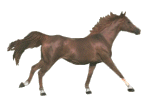
N. Ireland
2634 Posts |
 Posted - 29 Sep 2009 : 11:09:28 AM Posted - 29 Sep 2009 : 11:09:28 AM





|
| sorry to hear your boys got laminitis. But by the sounds of it your boys got laminitis through stress. My mare gets stress related lami and cause its not food related in any way we feed her normal as we would have when she never had lami. Its also best if they can have some turn out cause this is the first thing that helped my mare with her last attack, she could just about walk out of her stable she was that bad vets wanting to pts. after some treatment from the farrier we took her shoes off and still pretty lame and high pulse we turned her out in too a field full of sweet grass that hadn;t been grazed that year and we turned her out may with her foal at foot. Within a few weeks she was completely sound again, just kept trimming her feet up. So if its stress related be careful but i wouldn't worry too much about the food intake its found that too little can be as bad for laminatics as too much. But all horses respond from it differet. |
    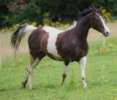
|
Report to Moderator  |
|
|
Zan
Platinum Member
    
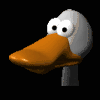
Scotland
3213 Posts |
 Posted - 29 Sep 2009 : 12:00:26 PM Posted - 29 Sep 2009 : 12:00:26 PM






|
Gosh---so much conflicting advice here, your head must be spinning!
I would echo the suggestion to get in touch with the Laminitis Trust/Clinic---link given above. They have a telephone helpline and are really good---they are the experts so you can trust what they say.
My personal thoughts are ---definitely soak the hay to get rid of as much sugar as possible, but still give limited quantities---little and often. I wouldn't give ad lib hay to any laminitic, especially if a good doer who would probably eat non stop if given the chance. No you don't want to starve him, but you do want to limit his intake. I would also feed like this whatever the cause of the laminitis---whatever caused it the physiology is the same once it gets going and too much sugar in the hind gut will keep it going.
One other comment---I am a bit disturbed that your vet said at least there was no sign of Cushings. I know from personal experience that horses can have no obvious symptoms of Cushings and still get Cushings related laminitis. The only way to know is a blood test, but if you do have tests done don't let your vet do the dex suppression test which involves injecting steroid into the horse which can make the laminitis worse---use the test recommended by the Laminitis Trust.
It does seem a coincidence it happened when his friend was taken away, so hopefully it is stress related, but I would suspect Cushings in any teen aged horse with sudden onset laminitis.
I also agree with a deep shavings bed rather than straw.
A good remedial farrier is worth his weight in gold when treating laminitis.
Good luck. |
 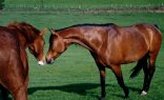 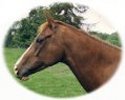  |
Edited by - Zan on 29 Sep 2009 12:03:19 PM |
Report to Moderator  |
|
|
ella
Gold Member
   

United Kingdom
786 Posts |
 Posted - 29 Sep 2009 : 1:05:09 PM Posted - 29 Sep 2009 : 1:05:09 PM





|
The minimum amount safe to feed is 1.5% bodyweight.
If he's on straw though, you don't know how much of that he's eating so I'd give 1.5% of well soaked hay & let him have straw as extra. |
   
"If an 'alternative treatment' has reliable effect it becomes classified simply as MEDICINE" D.B. |
Report to Moderator  |
|
|
Karon
Gold Member
   
England
1411 Posts |
 Posted - 29 Sep 2009 : 1:15:48 PM Posted - 29 Sep 2009 : 1:15:48 PM





|
Actually, one sign of Cushings is sudden laminitis for no obvious reason without any other symptoms so I suppose really, he does have one symptom of Cushings! Echo Zan 110% about not getting the dex suppression test done, way too dangerous IMHO.
One reason I suggested ad lib in small meshed nets is it is far harder for him to stuff himself if he has to try to get hay out of small holes  Depends how much of a pig he is though, and of course my experience is with Arabs so I would suppose a cob might be more inclined to overeat. Not all though, a friend's cob mare barely eats 2 sections of hay a night (half what one of mine would eat). I've used double nets too and put straw in as well so it just makes it all harder for the horse to get loads of hay out at once. Depends how much of a pig he is though, and of course my experience is with Arabs so I would suppose a cob might be more inclined to overeat. Not all though, a friend's cob mare barely eats 2 sections of hay a night (half what one of mine would eat). I've used double nets too and put straw in as well so it just makes it all harder for the horse to get loads of hay out at once. |
Report to Moderator  |
|
|
Vera
Membership Moderator
    

United Kingdom
8652 Posts |
 Posted - 29 Sep 2009 : 2:06:30 PM Posted - 29 Sep 2009 : 2:06:30 PM





|
| I didn't see this thread and have replied on your other one. |
    
Hampshire |
Report to Moderator  |
|
|
Kazzy
Platinum Member
    

England
3335 Posts |
 Posted - 29 Sep 2009 : 2:16:07 PM Posted - 29 Sep 2009 : 2:16:07 PM





|
Agree with the fact that an unexpected bout or unexplained bout of Laminitis may be cushings related. I would have the test done by The Laminitis Trust which is 100% safe for your horse.
And I would NEVER!!!! put a laminetic out on rich lush grass that hadnt been eaten, you are asking for trouble!!
Janet |
     
Sunny Cheshire |
Report to Moderator  |
|
|
brockle
Bronze Member
 
United Kingdom
166 Posts |
 Posted - 29 Sep 2009 : 7:48:32 PM Posted - 29 Sep 2009 : 7:48:32 PM





|
Thank you all for taking the trouble to help us, such a relief to be able to learn from your advice. I spent last night making a tiny holed net, he was amazed to meet up with it today and has to work very hard. Will make more and have doubled up the others. Both boys are bored but already losing weight according to the tape. Dashed off and bought the top Spec anti-lam which was much appreciated. Anything that comes in a rubber bowl is so special.
Best of all is that although Jack thinks about beginning to move he is walking around a bit and not shuffling about from foot to foot all the time which makes me feel a bit more hopeful.
Joy comes when the other two come in, it is touching to see how pleased they all are to be together even if four is a small herd. Fingers tightly crossed every morning but this evening at least don't feel so highly stressed though that could simply be lack of sleep due to worrying. Why do we all love them so much!!! |
Report to Moderator  |
|
|
precious
Platinum Member
    

England
2253 Posts |
 Posted - 30 Sep 2009 : 08:34:19 AM Posted - 30 Sep 2009 : 08:34:19 AM






|
I know what stress your going through, my very good mates 20year old horse has come down very sudden with bad laminitis in both her back feet! Think she has got cushings. It is touch and go with her at the moment so fingers and toes crossed.
She is on soacked hay (soaked for a couple of hours) and 2 feeds (happy hoof) so that she can have her 4 bute a day and ACP's
Ring the laminitis trust and your vet they willl both give you great advice.
Hope he improves
|
     
Gemma Thompson
Birmingham West Midlands
|
Report to Moderator  |
|
|
Karon
Gold Member
   
England
1411 Posts |
 Posted - 30 Sep 2009 : 08:50:50 AM Posted - 30 Sep 2009 : 08:50:50 AM





|
It is a worry, I'm not surprised you've been feeling stressed. It sounds like he's starting to improve which is good news.
Precious, sorry to hear about your friend's mare  Sounds like it could be a Cushings related attack at that age, will keep everything crossed she gets through it. Sounds like it could be a Cushings related attack at that age, will keep everything crossed she gets through it. |
Report to Moderator  |
|
|
Pasha
Platinum Member
    

England
3622 Posts |
 Posted - 30 Sep 2009 : 12:01:26 PM Posted - 30 Sep 2009 : 12:01:26 PM





|
So sorry you're going through this (your friend too precious) and I can't add much to what has been said already, other than you will get loads and loads of advice and it is hard to know what to do, (I went from one thing to another trying to help my boy) and in the end, all you can do is take advice from the experts (Laminitis Trust and your vet) and listen to your horse!
I 100% agree with soaking hay to remove sugar content!
Horses should be fed 2% of their bodyweight in forage per day. If they are of ideal weight (weigh tape + condition score) then I would feed this in soaked hay i.e. a 500kg horse would have 2 x 10lb haynets in 24hrs. BUT if you need to lose some weight, reduce this to 1.5% (as others have said, it is dangerous to starve them - much better to lose weight gradually). You should notice the weigh tape will show they have lost weight after being in anyway as they would have lost their grass belly, so condition scoring is also a useful tool to actually see if they are losing fat!
After much agonising over what to feed, I went with the Laminitis Trust approved diet and notice a huge difference immediately! I feed Spillers Happy Hoof and Formula 4 Feet + Equine Gold (Yeast). I found this to be the easiest (and most cost effective) way of ensuring everything that's needed gets in without having to measure out tonnes of different powders that he wouldn't eat anyway! I also keep a bag of Spillers High Fibre Cubes for when he doesn't want to eat his tablets (just put them in a handful and away they go lol!)
Pasha went off Speedi-Beet but I have some that I will add in the winter if he starts to lose condition, which is unlikely knowing him 
To be honest, feeding Laminitis friendly feeds is not so much about losing weight and more about ensuring that they have the right vitamins and minerals to recover and support healthy gut function! So regardless of the cause, I would advocate reassessing the feed your horse is getting to ensure he is getting the best thing to help him recover!
Pasha didn't show any signs of Cushings other than fatty deposits above the eyes (and sudden Laminitis)! My vet diagnosed EMS from visuals, but the blood tests came back positive IR and Cushings! He didn't respond to Pergolide at all (first one Liphook had heard of that hadn't and now my vet has 4 cases the same) so he is on a combination of Pergolide and Metapirone which seems to be working!
Sarah x  |
    |
Report to Moderator  |
|
|
guisburnfeefee
Bronze Member
 

167 Posts |
 Posted - 30 Sep 2009 : 1:29:22 PM Posted - 30 Sep 2009 : 1:29:22 PM





|
Does he have weight to lose? When my mare had laminitis I was told for weight loss 1 and half percent of body weight in total DRY feed - including hay - the laminitis trust may be able to advise on how to measure - approx - dry matter in grass . If there isn't a lot or no weight loss then I was told 2% of body weight in total feed over a 24 hour period.Hope that helps - I sympathise - it's a very difficult condion to manage . Beware the weather forecats says possibility of first ground frost thursday night - depending on where you are in the country. Fr osty grass is very dangerous to lammys. osty grass is very dangerous to lammys. |
       |
Report to Moderator  |
|
| |
 Topic Topic  |
|

